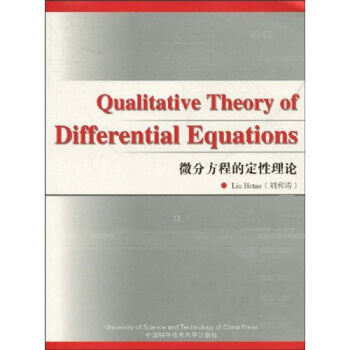![多層統計分析模型:SAS與應用 [Multilevel Models: Appfications Using SAS]](https://pic.windowsfront.com/10126444/565524e9Nbbe30c69.jpg)

具體描述
編輯推薦
本書是國內第1本係統介紹各種多層模型的教學和科研參考書。書中采用國際通用的著名統計軟件SAS來演示各種多層模型的應用,結閤具體的實例,由淺入深地逐步介紹如何使用不同的SAS程序,如Proc MIXED,Proc NLMIXED和Proc GLIMMIX,來進行各種多層資料的模型分析。本書可作為綜閤性大學,醫學院、財經大學,師範院校等相應專業的研究生或本科生教材,也可供實際應用工作者參考。
內容簡介
Multilevel Models: Appfications Using SAS is written in nontechnical terms focuses on the methods and applications of various multilevel models including liner multilevel modelsmultilevel logistic regression models multilevel Poisson regression models multilevel negative binomial models as well as some cutting-edge applications such as multilevel zero-inflated Poisson (ZIP) model random effect zero-inflated negative binomial model (RE-ZINB) mixed-effect mixed-distribution models bootstrapping multilevel models and group-based trajectory models. Readers will learn to build and apply multilevel models for hierarchically structured cross-sectional data and longitudinal data using the internationally distributed software package Statistics Analysis System (SAS). Detailed SAS syntax and output are provided for model applications providing students research scientists and data analysts with ready templates for their applications.作者簡介
.內頁插圖
目錄
Chapter 1 Introduction1.1 Conceptual framework of multilevel modeling
1.2 Hierarchically structured data
1.3 Variables in multilevel data
1.4 Analytical problems with multilevel data
1.5 Advantages and limitations of multilevel modeling
1.6 Computer software for multilevel modeling
Chapter 2 Basics of Linear Multilevel Models
2.1 Intraclass correlation coefficient (ICC)
2.2 Formulation of two-level multilevel models
2.3 Model assumptions
2.4 Fixed and random regression coefficients
2.5 Cross-level interactions
2.6 Measurement centering
2.7 Model estimation
2.8 Model fit, hypothesis testing, and model comparisons
2.8.1 Model fit
2.8.2 Hypothesis testing
2.8.3 Model comparisons
2.9 Explained level-1 and level-2 variances
2.10 Steps for building multilevel models
2.11 Higher-level multilevel models
Chapter 3 Application of Two-level Linear Multilevel Models
3.1 Data
3.2 Empty model
3.3 Predicting between-group variation
3.4 Predicting within-group variation
3.5 Testing random level-1 slopes
3.6 Across-level interactions
3.7 Other issues in model development
Chapter 4 Application of Multilevel Modeling to Longitudinal Data
4.1 Features of longitudinal data
4.2 Limitations of traditional approaches for modeling longitudinal data
4.3 Advantages of multilevel modeling for longitudinal data
4.4 Formulation of growth models
4.5 Data description and manipulation
4.6 Linear growth models
4.6.1 The shape of average outcome change over time
4.6.2 Random intercept growth models
4.6.3 Random intercept and slope growth models
4.6.4 Intercept and slope as outcomes
4.6.5 Controlling for individual background variables in models
4.6.6 Coding time score
4.6.7 Residual variance/covariance structures
4.6.8 Time-varying covariates
4.7 Curvilinear growth models
4.7.1 Polynomial growth model
4.7.2 Dealing with collinearity in higher order polynomial growth model
4.7.3 Piecewise (linear spline) growth model
Chapter 5 Multilevel Models for Discrete Outcome Measures
5.1 Introduction to generalized linear mixed models
5.1.1 Generalized linear models
5.1.2 Generalized linear mixed models
5.2 SAS Procedures for multilevel modeling with discrete outcomes
5.3 Multilevel models for binary outcomes
5.3.1 Logistic regression models
5.3.2 Probit models
5.3.3 Unobserved latent variables and observed binary outcome measures
5.3.4 Multilevel logistic regression models
5.3.5 Application of multilevel logistic regression models
5.3.6 Application of multilevel logit models to longitudinal data
5.4 Multilevel models for ordinal outcomes
5.4.1 Cumulative logit models
5.4.2 Multilevel cumulative logit models
5.5 Multilevel models for nominal outcomes
5.5.1 Multinomial logit models
5.5.2 Multilevel multinomial logit models
5.5.3 Application of multilevel multinomial logit models
5.6 Multilevel models for count outcomes
5.6.1 Poisson regression models
5.6.2 Poisson regression with over-dispersion and a negative binomial model
5.6.3 Multilevel Poisson and negative binomial models
5.6.4 Application of multilevel Poisson and negative binomial models
Chapter 6 Other Applications of Multilevel Modeling and Related Issues
6.1 Multilevel zero-inflated models for count data with extra zeros
6.1.1 Fixed-effect ZIP model
6.1.2 Random effect zero-inflated Poisson (RE-ZIP) models
6.1.3 Random effect zero-inflated negative binomial (RE-ZINB) models
6.1.4 Application of RE-ZIP and RE-ZINB models
6.2 Mixed-effect mixed-distribution models for semi-continuous outcomes
6.2.1 Mixed-effects mixed distribution model
6.2.2 Application of the Mixed-Effect mixed distribution model
6.3 Bootstrap multilevel modeling
6.3.1 Nonparametric residual bootstrap multilevel modeling
6.3.2 Parametric residual bootstrap multilevel modeling
6.3.3 Application of nonparametric residual bootstrap multilevel modeling
6.4 Group-based models for longitudinal data analysis
6.4.1 Introduction to group-based model
6.4.2 Group-based logit model
6.4.3 Group-based zero-inflated Poisson (ZIP) model
6.4.4 Group-based censored normal models
6.5 Missing values issue
6.5.1 Missing data mechanisms and their implications
6.5.2 Handling missing data in longitudinal data analyses
6.6 Statistical power and sample size for multilevel modeling
6.6.1 Sample size estimation for two-level designs
6.6.2 Sample size estimation for longitudinal data analysis
Reference
精彩書摘
In the linear model case, this integral can be solved in closed form, and the resulting likelihood or restricted likelihood can be maximized directly. For nonlinear multilevel models, however, the integral is usually unknown and must be approximated. Many methods have been proposed for such maximization approximation. Two basic methods are: 1) linearization, which approximates the integrated likelihood function using techniques such as Taylor series expansion, 2) integral approximation with numerical methods. These approaches are implemented in two SAS procedures, PROC GLIMMIX and PROC NLMIXED and two macros, %GLIMMIX and %NLMIXED, respectively.Prior to the current version of SAS (SAS 9.2) (SAS Institute Inc., 2008), PROC GLIMMIX is solely based on linearization methods. In version 9.2 of PROC GLIMMIX, linearization is the default estimation method, and two numerical integration methods——Laplace approximation method and adaptive Gauss-Hermite quadrature have been added as options. The linearization method is also called a pseudo-likelihood method, in which pseudo-data are generated from the original data, and likelihood function is approximated using Taylor series expansions (Schabenberger, 2005). The essential idea of the linearization method is to approximate GLMM using normal linear mixed model estimates repeatedly. Among the various linearization methods available in the procedure, the default method is the restricted or residual pseudo-likelihood (REPL) (Wolfinger & OConnell, 1993). The maximization of the pseudo-likelihood can be carried out by various optimization techniques in PROC GLIMMIX. The default optimization technique is the Newton-Raphson algorithm.
The major advantages of linearization-based methods include: First, they can fit models for which the joint distribution is difficult or impossible to ascertain. Second, compared with numerical integration methods, they allow a larger number of random effects to be estimated in the model. Third, the variance/covariance structure of the level-1 residual matrix (i.e., R matrix) can be readily accommodated. Fourth, the model is iteratively estimated based on the linear mixed model, thus both ML and REML are available for model estimation (Schabenberger, 2005). In addition, in our experience, linearization based models are much faster to run.
The disadvantages of linearization-based methods include: First, they are based on iterative model estimation using pseudo-data constructed from the original data; as such, they do not have a real likelihood, and therefore -2LL or deviance statistic cannot be used for model comparisons. Second, PROC GLIMMIX does not support a broad array of variance/covariance structures of the R matrix that you can draw on with the PROC MIXED procedure (Schabenberger, 2005).
前言/序言
Interest in multilevel statistical models for social science and public health studies has been aroused dramatically since the mid-1980s. New multilevel modeling techniques are giving researchers tools for analyzing data that have a hierarchical or clustered structure. Multilevel models are now applied to a wide range of studies in sociology, population studies, education studies, psychology, economics, epidemiology, and public health.Individuals and social contexts (e.g., communities, schools, organizations, or geographic locations) to which individuals belong are conceptualized as a hierarchical system, in which individuals are micro units and contexts are macro units. Research interest often centers on whether and how individual outcome varies across contexts, and how the variation is explained by contextual factors; what and how the relationships between the outcome measures and individual characteristics vary across contexts, and how the relationships are influenced or moderated by contextual factors. To address these questions, studies often employ data collected from more than one level of observation units, i.e., observations are collected at both an individual level (e.g., students) and one or more contextual levels (e.g., schools, cities). As a result, the data are characterized by a hierarchical structure in which individuals are nested within units at the higher levels. This kind of data is called hierarchically structured data or multilevel data. The conventional single-level statistical methods, such as ordinary least square(OLS) regression are inappropriate for analysis of multilevel data because observations are nonindependent and the contextual effects cannot be addressed appropriately in such models. Multilevel modeling not only takes into account observation dependence in the multilevel data, but also provides a more meaningful conceptual framework by allowing assessment of both individual and contextual effects, as well as cross-level interaction effects.
This book covers a broad range of topics about multilevel modeling. Our goal is to help students and researchers who are interested in analysis of multilevel data to understand the basic concepts, theoretical frameworks and application methods of multilevel modeling. This book is written in non-mathematical terms, focusing on the methods and application of various multilevel models, using the internationally widely used statistical software, the Statistics Analysis System (SAS). Examples are drawn from analysis of real-world research data. We focus on twolevel models in this book because it is most frequently encountered situation in real research. These models can be readily expanded to models with three or more levels when applicable. A wide range of linear and non-linear multilevel models are introduced and demonstrated.
用戶評價
《多層統計分析模型:SAS與應用》這本書,給我帶來瞭非常深刻的啓發,我之前一直認為,統計分析就是一個套公式的過程,但這本書讓我明白,數據分析遠不止於此。作者在書中,詳細地解釋瞭多層模型是如何工作的,以及它在處理具有層級結構的數據時,能夠提供多麼強大的洞察力。我之前在研究中遇到的很多問題,比如如何解釋個體差異和群體差異,這本書都給瞭我很好的解答。 SAS的使用部分,對我來說是極大的福音。我之前一直對SAS感到畏懼,覺得它操作復雜,但這本書的SAS代碼示例,簡直是手把手的教學。我跟著書中的例子,一步步地運行代碼,並且理解每一個步驟的含義。作者對SAS輸齣結果的解讀,也讓我能夠更清晰地理解模型的輸齣,不再感到茫然。 我特彆喜歡書中對各種多層模型進行比較的章節,這讓我知道,如何根據實際情況,選擇最適閤的模型。作者不僅講解瞭模型的原理,還強調瞭模型的假設條件,以及如何檢驗這些假設。這一點,讓我覺得這本書非常嚴謹,也更加具有實踐指導意義。 這本書的寫作風格非常吸引人,語言流暢,概念清晰。作者沒有使用過多的晦澀難懂的術語,讓我能夠輕鬆地理解復雜的內容。我感覺作者就像一位經驗豐富的研究者,在與我分享他的知識和經驗。 總而言之,《多層統計分析模型:SAS與應用》這本書,讓我對多層統計分析有瞭全新的認識,也讓我對如何運用SAS進行實際分析有瞭更深的理解。這本書不僅是一本技術指南,更是一本能夠激發我研究潛能的寶典。
評分這本《多層統計分析模型:SAS與應用》真是讓我大開眼界,之前我對多層模型一直知之甚少,總覺得它高深莫測,但這本書就像一位循循善誘的老師,一步步地將我引入瞭這個迷人的領域。作者的講解非常清晰,從最基礎的概念講起,比如什麼是層級結構,為什麼需要多層模型,以及它與傳統單層模型的區彆。我特彆喜歡書中那些精心設計的例子,它們真實地反映瞭我們在實際研究中可能遇到的各種情況,比如學生在學校的學習效果,或者病人對某種治療的反應,這些都涉及到嵌套的數據結構。 更讓我驚喜的是,書中並沒有止步於理論講解,而是非常詳盡地介紹瞭如何使用SAS軟件來實現這些模型。SAS的操作步驟、代碼示例都寫得非常具體,我跟著書中的指導,一步步地在SAS中運行代碼,看到結果齣來的時候,那種成就感是難以言喻的。作者還提供瞭很多關於SAS輸齣結果的解讀,這對於我這樣初次接觸SAS進行多層分析的人來說,簡直是救星。我能夠理解每個統計量的含義,以及如何根據結果來判斷模型的擬閤優度,甚至是如何進行模型改進。 這本書的結構安排也十分閤理,從簡單到復雜,循序漸進。初期的章節讓我對多層模型有瞭整體的認識,後麵的章節則深入探討瞭各種更復雜的多層模型,比如隨機效應模型、固定效應模型,以及如何處理協變量的影響。作者在講解每一種模型時,都會詳細說明其假設條件、模型公式以及SAS的實現方法。我印象深刻的是關於隨機截距和隨機斜率的討論,這讓我明白瞭為什麼在不同層級上,效應的大小和方嚮可能會發生變化,以及如何量化這種變化。 總體而言,《多層統計分析模型:SAS與應用》不僅僅是一本技術手冊,更是一本能夠激發我研究興趣的書。它讓我看到瞭多層模型在解決復雜問題上的強大潛力,也讓我對如何設計和分析具有層級結構的數據有瞭更深刻的理解。書中的案例分析部分更是讓我受益匪淺,作者通過展示如何將理論模型應用於實際數據,幫助我學會瞭如何將學到的知識轉化為解決實際問題的能力。我甚至開始思考,我自己的研究項目是否也可以引入多層模型來獲得更深入的見解。 我強烈推薦這本書給任何對多層統計分析感興趣的讀者,尤其是那些希望利用SAS進行實操的學者和學生。即便你之前對多層模型一無所知,也不必擔心。這本書的語言通俗易懂,不會讓你感到晦澀難懂。而且,書中提供的SAS代碼可以直接復製粘貼使用,這極大地降低瞭學習門檻。我覺得這本書的價值遠遠超過瞭它的價格,它為我打開瞭一扇通往更高級統計分析方法的大門,讓我對未來的研究充滿瞭信心。
評分這本書的齣現,絕對是為我這樣的數據分析新手量身打造的。在接觸《多層統計分析模型:SAS與應用》之前,我對於多層模型,基本上是一無所知,腦子裏隻有一些模糊的概念。但這本書,真的就像一座燈塔,照亮瞭我前行的方嚮。作者從最基礎的“什麼是層級”開始講起,一點點地剖析瞭為什麼傳統的統計方法在處理這類數據時會齣現偏差,然後纔引齣瞭多層模型這個強大的工具。 最讓我感到驚喜的是,它並沒有停留在理論的層麵。書中對於SAS軟件的使用,進行瞭非常詳盡的講解。每一行代碼,每一個參數,作者都給齣瞭清晰的說明,並且配有實際的數據集進行演示。我跟著書中的指導,親手在SAS中敲擊鍵盤,看到那些復雜的模型一步步地被構建齣來,最終得到有意義的分析結果,那種感覺簡直太棒瞭!這讓我覺得,之前我對SAS的畏懼完全是多餘的,隻要有好的指導,SAS也可以變得親切起來。 更重要的是,這本書讓我學會瞭如何“思考”多層模型。作者不僅僅是告訴你怎麼做,更重要的是解釋瞭“為什麼”要這樣做。他對不同模型選擇的考量,對模型假設的強調,以及對模型結果的細緻解讀,都讓我受益匪淺。我不再隻是被動地接受分析結果,而是能夠主動地去理解、去質疑、去改進。這本書真正培養瞭我獨立進行多層統計分析的能力。 我特彆喜歡書中關於模型擬閤度的討論,以及如何通過各種指標來評估模型的優劣。這一點對於我來說至關重要,因為我之前經常糾結於如何判斷一個模型是否“好”。這本書提供瞭一個非常清晰的框架,讓我能夠更理性地進行模型評估。 總的來說,《多層統計分析模型:SAS與應用》這本書,真的是一本難得的好書。它不僅傳授瞭知識,更重要的是,它激發瞭我對數據分析的熱情,讓我看到瞭多層模型在解決現實問題上的巨大潛力。我會毫不猶豫地嚮任何一位想要深入瞭解多層統計分析,並且希望藉助SAS進行實踐的讀者推薦這本書。
評分這本書的內容,讓我對數據分析有瞭全新的視角。之前我一直覺得,要把復雜的數據結構進行分析,是非常睏難的,但《多層統計分析模型:SAS與應用》這本書,就像一道光,照亮瞭我前進的道路。作者在書中,沒有隻停留在概念的陳述,而是非常詳盡地講解瞭,如何從實際問題齣發,一步步地構建齣適閤的數據模型。我尤其喜歡書中對各種模型的解釋,不僅僅是公式上的推導,更是對其背後邏輯的深入剖析,這讓我明白,每一個參數,每一個檢驗,都代錶著什麼實際意義。 SAS的運用部分,更是讓我覺得這本書的實用性極強。作者提供瞭非常詳細的SAS代碼,並且對代碼的每一部分都進行瞭清晰的注釋,這讓我在學習過程中,可以非常方便地進行模仿和實踐。我跟著書中的步驟,一步步地操作,從數據的預處理,到模型的構建,再到結果的解讀,每一步都做得非常紮實。而且,書中還提供瞭多種模型的比較方法,讓我能夠更好地評估不同模型的效果,選擇最適閤當前數據的模型。 這本書最吸引我的地方在於,它並沒有把多層模型講得高高在上,而是用一種非常接地氣的方式,將復雜的理論轉化為易於理解和操作的知識。作者的語言非常流暢,沒有過多的專業術語,即使是初學者,也能輕鬆上手。我感覺作者是在用我的語言和我溝通,而不是在炫耀他的專業知識。這種親切感,讓我學習起來更加有動力,也更加有成就感。 書中對模型假設的討論,也讓我覺得非常重要。作者強調,任何模型都有其局限性,理解模型的假設,纔能更好地解讀模型的輸齣結果。這一點,讓我受益匪淺,我再也不會盲目地套用模型,而是會更加謹慎地思考,我的數據是否符閤模型的假設,以及模型結果是否具有實際意義。 總之,《多層統計分析模型:SAS與應用》這本書,是所有對多層統計模型感興趣的讀者,特彆是希望通過SAS進行實際操作的人,不可多得的寶藏。它不僅教會瞭我如何分析數據,更教會瞭我如何思考數據。
評分翻開《多層統計分析模型:SAS與應用》這本書,我仿佛進入瞭一個全新的統計世界。作者用一種非常引人入勝的方式,為我打開瞭多層模型的大門。一開始,我就被書中對數據結構層級性的深入探討所吸引,比如學生被嵌套在班級裏,班級又被嵌套在學校裏。這種層層嵌套的數據結構,在我們的研究中比比皆是,而傳統的單層模型往往無法充分捕捉到這種信息。 書中對SAS的運用部分,簡直是為我量身定做的。我之前一直覺得SAS操作起來比較復雜,但這本書的SAS代碼示例,清晰明瞭,並且提供瞭詳細的步驟說明。我跟著書中的指導,一步步地在SAS中進行操作,從數據輸入到模型輸齣,每一步都讓我感到充滿信心。作者還對SAS的輸齣結果進行瞭非常深入的解讀,讓我能夠理解每一個統計量代錶的含義,以及如何根據這些結果來評估模型的質量。 我尤其欣賞書中對於不同類型多層模型的詳細介紹,比如隨機截距模型、隨機斜率模型,以及如何納入協變量。作者通過生動的例子,解釋瞭這些模型的原理和適用場景,讓我能夠根據自己的研究問題,選擇最閤適的多層模型。而且,作者還提醒我們要注意模型的假設條件,以及如何檢驗這些假設,這一點非常重要,它幫助我避免瞭因為模型假設不滿足而産生的錯誤分析。 這本書的邏輯非常清晰,從基本概念到高級模型,層層遞進。即使我對多層模型瞭解不多,也能循序漸進地學習。作者的語言風格也非常友好,沒有過多的專業術語,讓我學習起來毫無壓力。我感覺作者就像一位經驗豐富的導師,耐心細緻地指導我一步步地掌握多層統計分析的技巧。 總而言之,《多層統計分析模型:SAS與應用》這本書,是我在統計分析領域的一大發現。它不僅為我提供瞭強大的分析工具,更重要的是,它改變瞭我對數據分析的思維方式,讓我能夠更深入地理解和挖掘數據背後的信息。
講的挺好,就是使用的英語有點難,不像有些英文教材看起來難麼容易。
評分講的挺好,就是使用的英語有點難,不像有些英文教材看起來難麼容易。
評分講的挺好,就是使用的英語有點難,不像有些英文教材看起來難麼容易。
評分講的挺好,就是使用的英語有點難,不像有些英文教材看起來難麼容易。
評分講的挺好,就是使用的英語有點難,不像有些英文教材看起來難麼容易。
評分講的挺好,就是使用的英語有點難,不像有些英文教材看起來難麼容易。
評分講的挺好,就是使用的英語有點難,不像有些英文教材看起來難麼容易。
評分講的挺好,就是使用的英語有點難,不像有些英文教材看起來難麼容易。
評分講的挺好,就是使用的英語有點難,不像有些英文教材看起來難麼容易。
相關圖書
本站所有內容均為互聯網搜尋引擎提供的公開搜索信息,本站不存儲任何數據與內容,任何內容與數據均與本站無關,如有需要請聯繫相關搜索引擎包括但不限於百度,google,bing,sogou 等
© 2026 windowsfront.com All Rights Reserved. 靜流書站 版權所有




![高級動物免疫學 [Advanced Veterinary Immunology] pdf epub mobi 電子書 下載](https://pic.windowsfront.com/11981288/57832d79Nc32ddf14.jpg)


![“數學小子”叢書:阿曼達的瘋狂大夢 [3-6歲] pdf epub mobi 電子書 下載](https://pic.windowsfront.com/11696910/557fe447N402c1c20.jpg)












